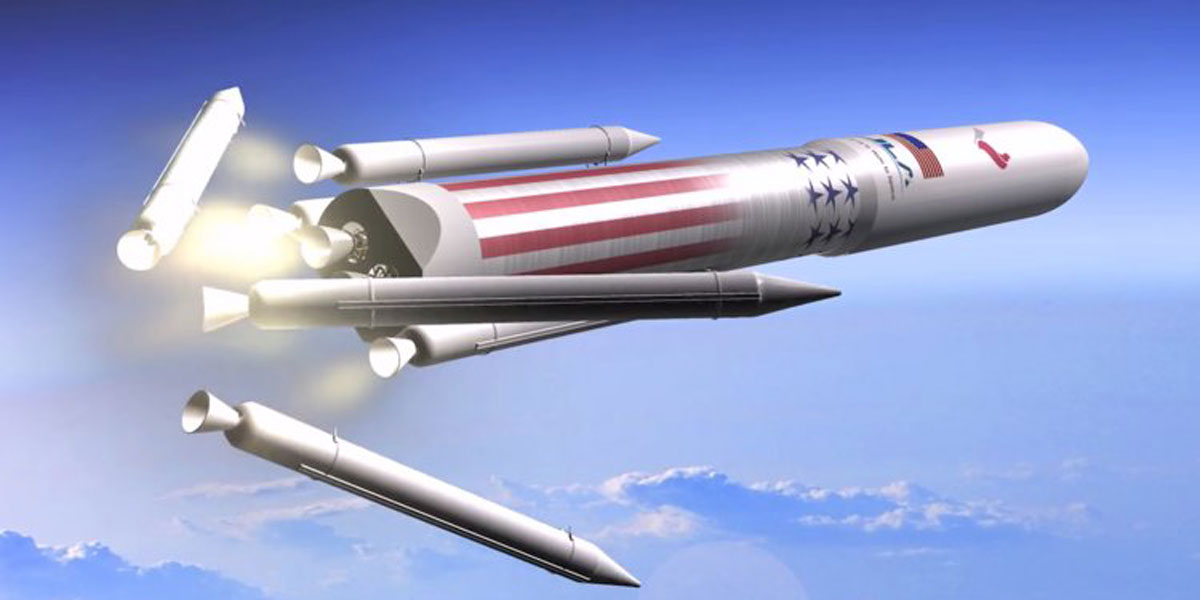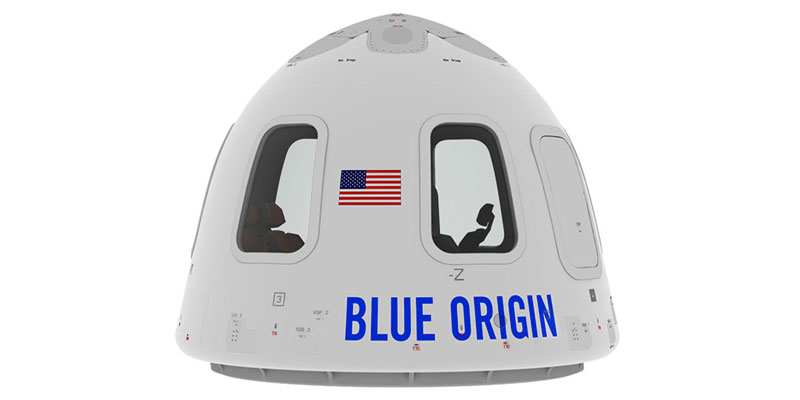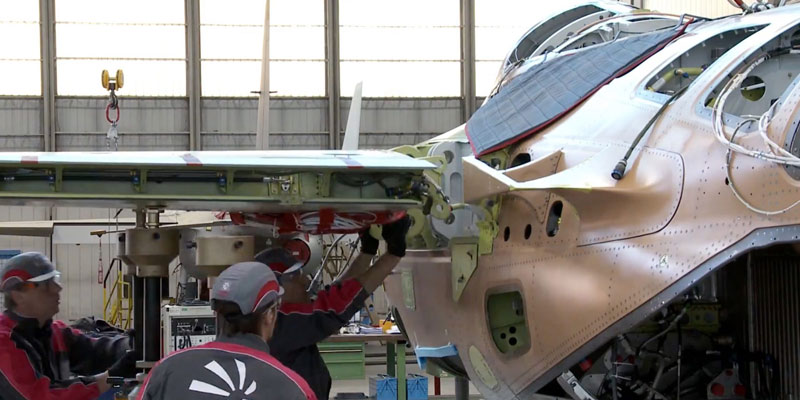In Alabama’s aerospace industry, big ideas blast off and hurl into the heavens as powerful rockets on voyages of discovery, carrying the DNA of the mighty Saturn V. There are visions of next-generation lunar rovers, new launch systems being born and novel technologies emerging.
And that’s just part of the story. Alabama’s growing aerospace sector is involved in just about every segment of the industry, from aircraft assembly, rocket propulsion, precision component manufacturing, missile defense and advanced aerospace R&D.
“Alabama has a long history of developing highly innovative and complex solutions to conquer skies and space, and we continue to help chart the course for the global industry today,” said Greg Canfield, Secretary of the Alabama Department of Commerce.
“Our engineers, technicians and skilled workers have proven capabilities, and that’s why aerospace companies from around the world keep turning to Alabama to tackle the industry’s biggest challenges,” he added.
In fact, many of the biggest names in the aerospace/defense sector have major operations in Alabama. That includes Boeing, which has had a large presence in Huntsville for over six decades; Lockheed Martin, which works on hypersonic technologies in North Alabama and produces Javelin missiles in Troy; and Raytheon, which operates a futuristic missile factory in Huntsville.
The sector is expanding at a rapid clip. Since 2016, Alabama has attracted nearly $3.6 billion in aerospace industry investment, generating over 8,000 job commitments, according to data from the Alabama Department of Commerce.
In 2022 alone, almost $1.2 billion in new aerospace investment was announced, along with over 1,500 jobs for Alabama. Airbus, Blue Origin and the United Launch Alliance (ULA) are among the companies that kicked off growth projects in the state last year.
With the 2023 Paris Air Show getting under way next week, it’s an ideal time to explore some of the dynamic developments that are energizing the future of Alabama’s multi-dimensional aerospace industry.
Here is a brief look at a few of those developments.
COUNTDOWN TO VULCAN
On Jan. 13, 2023, the first Vulcan Centaur rocket left ULA’s factory in Decatur for Cape Canaveral Space Force Station, where it has been undergoing testing for its first flight, scheduled for later this year.
Vulcan Centaur is ULA’s next-generation rocket, combining new technology with the best of its workhorse Atlas V and Delta IV heavy rockets. To build the rocket, ULA invested heavily in its Alabama factory, with new automated tooling solutions, welding equipment upgrades, robotic assembly lines for fabrication, and other upgrades for maximum efficiency.
ULA says the Vulcan — powered by Blue Origin BE-4 rocket engines from its Alabama plant — will have a busy launch schedule. More than 70 Vulcan launches are currently on the manifest, including 38 launches to deploy Amazon’s Kuiper satellites for broadband service.
Meanwhile, ULA and its partner Beyond Gravity, which builds payload fairings, are growing in Decatur with a combined expansion project valued at $350 million, creating over 200 jobs. Get more details.
“The major expansions underway at ULA and Beyond Gravity certainly solidify their presence in Decatur, Morgan County, Alabama for years to come,” said Jeremy Nails, president and CEO of the Morgan County Economic Development Association. “We are truly excited about their continued growth and the new generation Vulcan rocket production ramp-up.
“The new jobs announced by these projects will create hundreds of high-paying job opportunities for our citizens,” added Nails, who is attending the Paris Air Show with the Alabama team.
POWERING THE SLS
The Space Launch System (SLS) is the primary launch vehicle for NASA’s deep space exploration plans, including a crewed return mission to the Moon and a future mission to Mars. And Alabama is helping the program soar.
Huntsville’s Marshall Spaceflight Center spearheaded the design and development of SLS, which successfully blasted off on its first mission, Artemis I, in November 2022. Read about the launch.
Marshall not only contributed to Artemis I, but its teams are also already building rockets and working on other technology and hardware needed for future missions that will return American astronauts to the Moon.
Alabama companies including Boeing, which built the Artemis I rocket’s 212-foot core stage and developed the flight avionics suite, and ULA, whose Decatur factory produced the interim cryogenic propulsion stage (ICPS) for the rocket’s upper stage, are deeply involved in the SLS program.
ULA is now readying another Alabama-built ICPS for the program’s second mission, Artemis II, which is scheduled for launch in 2024 with a crew performing a lunar flyby.
Altogether, NASA says 106 companies in Alabama are making contributions to the SLS program and its Orion capsule project.
“From the pioneering development of the Saturn V rocket over a half century ago to designing and developing the new SLS that will take Artemis back to the Moon, thousands of Alabama space workers can take great pride in their contributions,” Secretary Canfield said.
SECOND-GEN ‘MOON BUGGY’
Alabama-based Dynetics has lined up a speed-obsessed partner in a project to design and build a new lunar rover — NASCAR.
The collaboration will focus on the areas of speed, safety and reliability. Details of the partnership as well as the design and technology of the Lunar Terrain Vehicle were unveiled in April at the Space Foundation’s 38th annual Space Symposium, the premier assembly for the global space ecosystem.
Dynetics says the rover’s design harkens back to that of the Apollo program’s “moon buggy,” first imagined at Marshall and later assembled by Boeing in Huntsville.
“We are fully committed to supporting NASA’s ambitious plans for lunar exploration,” said Steve Cook, president of the Leidos Dynetics Group.
The Apollo rovers remained behind on the Moon, but a rover used for vibration testing is on display in the Davidson Saturn V Center at the U.S. Space & Rocket Center in Huntsville.
HERCULEAN CHALLENGE
A team from the University of Alabama in Huntsville (UAH) also knows a thing or two about a successful lunar rover — the students placed first in the 2023 NASA Human Exploration Rover Challenge (HERC).
The competition, held April 20-22 at the U.S. Space & Rocket Center, challenged college and high school teams from around the nation and the world to design, develop, build and test human-powered rovers capable of negotiating difficult terrain.
The UAH rover was nicknamed “HERCules” and guided by a two-person crew, competing with 49 teams from 20 states and eight countries.
“As the advisor/instructor for six years now, I am proud of our UAH students,” said David Fikes, a lecturer in the Department of Mechanical and Aerospace Engineering, who served as the team advisor. “They set a goal and worked extremely hard to achieve it, some putting in 20-plus hours a week at times.”
HERC was inspired by Apollo 15, the July 1971 NASA mission debuting the LRV, or Lunar Roving Vehicle — Alabama’s very own “moon buggy.”
AIRBUS’ FLIGHT PLAN
Of course, not every industry player in Alabama is focused on space. Continuing on its growth trajectory in Alabama, Airbus is adding a third Final Assembly Line at its Mobile manufacturing complex to boost production of A320 Family aircraft.
The project, building on $1 billion Airbus has already invested in Alabama, will double production space and generate 1,000 additional jobs.
To facilitate Airbus’ hiring plans, Alabama workforce development and education organizations are collaborating on new recruitment and training initiatives to build out the jobs pipeline.
“Airbus provides incredible career opportunities, and we have the awesome opportunity to help them find their team and assist with training,” said Ed Castile, director of AIDT and deputy secretary of the Alabama Department of Commerce.
It’s another major milestone for Airbus’s Mobile site, which launched production of A320 Family jets in 2015 and A220 aircraft on a dedicated FAL in 2020.
Over 385 aircraft deliveries have been made to customers at the Mobile facility.













